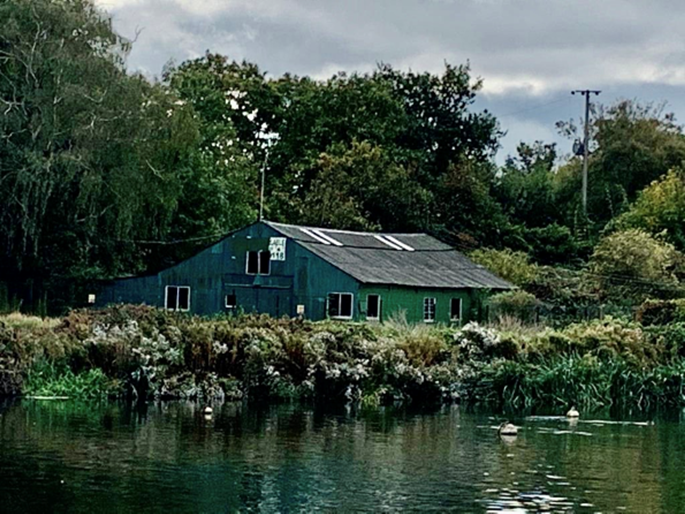With thanks to Nick Pollard
In Autumn 2015 Sunbury’s boatyard, George Wilsons & Sons closed for good. We ran an article on it back then, which we are now reprinting. The decision to do so followed the demolition of the old green boat sheds on Lock Island, opposite St Mary’s Church recently. They may have looked shabby, one had even burned down, but somehow it really does mark the end of an era. And the question follows of course…what is to be done with the land where the sheds were. The EA told Sunbury Matters “Our contractors have com-pleted the majority of the demolition work to remove the Wilson’s boatyard buildings, which was needed as a result of them becom-ing unsafe. Although we do not have any specific plans at this stage, we have had some enquiries from persons interested in the site. These have focused mainly on mooring provision.
Any plans that we promote going forward will need to demonstrate a benefit to the environ-ment, reduce flood risk and / or improve the services to our growing number of river users.” George Wilson & Sons was one of the longest established businesses in Sunbury, having being founded by George Wilson in 1907, when he acquired the Ferry House at Church Wharf from the Stroud family. The business descended to his sons George Frederick (Fred) and Ken, then to his grand-son Gordon, and eventually to his great-grandson Brian. Besides operating a ferry across to the Surrey bank of the Thames, and hiring out boats to the public, the firm soon began to build boats. At first punts and skiffs were constructed, but in time larger and more sophisticated craft were both designed and built by the yard. Premises were leased on Sunbury Lock Island, opposite the Ferry House, from the Thames Conservancy (now the Environment Agency) and slipways and ancillary buildings constructed. A large order for naval lifeboats during the Second World War led to an expansion both of the premises and the staff employed. After the War, the company carried on building naval craft, especially for use by the Sea Cadets, but also constructing pleasure craft to its own designs to cater for the increasing demand for cruisers. They also built work boats, including some for other countries, such as Gambia. In the late 1950s, Wilson’s began a partner-ship with the Dutch company Akerboom, taking their steel hulls and fitting them out. By the mid-1970s the rising popularity of low-maintenance fibreglass craft saw Wilson’s stop building, and the business concentrated on maintaining wooden boats for private owners, together with hiring out moorings and its own fleet of launches and punts for pleasure and fishing. With the closure of the business, the Ferry House was sold, and the site on the Lock Island returned to the Environment Agency. Thankfully Brian Wilson kindly donated many items of documentation and various artefacts to Spelthorne Museum, so the histo-ry of George Wilson & Sons will live on. The EA would be happy to receive any thoughts from residents on the use of the land, to help them consider future options. Email WaterwaysThames@environment-agency.gov.uk.

